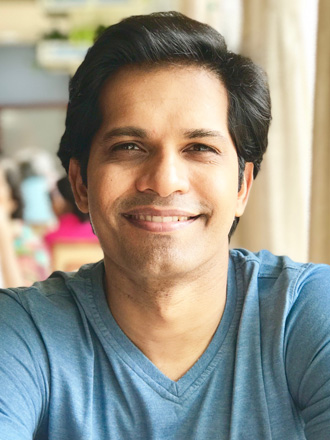As COVID-19 lockdown restrictions gradually relax in some countries, we talk to Stephan Gans, SVP Chief Insights and Analytics Officer at PepsiCo and Adrian Terron, Head of Customer Centricity at Tata Group about the impact on research and their plans for the future.
Some markets in Asia Pacific appear to be exiting the lockdown faster than the US or Europe, so does this mean different types of research depending on the region or applying learnings from one market to another?

“We see people in some regions of China coming out of complete lockdown, plus a concern for the second wave, so we need to understand how that influences consumer behavior as that concern will not be unique to China” says Gans. “The work I mentioned earlier (see part 1 of this Research World interview) around building algorithms that help us predict which small outlets will or will not close in countries like India and Mexico, we don’t have to do that in the US because of the different trade structure.
“This pandemic is rocking the foundations of everything that we all hold very dear, so you can draw parallels between any market because we are talking about very basic things like safety, health, the future of our children, food supplies being disrupted. However, at the same time we have to be very careful about how we apply this to predicting consumer behavior because of the cultural differences between people and markets around the world. We are doing different research in different places, and we are doing a lot of it.”
More research?
Whilst one might assume that clients will need to do more research coming out of this pandemic as consumer attitudes may have changed, the ESOMAR Insights in Times of COVID-19 Report estimates a 22% reduction in the overall size of the insights sector in 2020 due to tightening budgets.

It might well be that now is the time to reflect on the research toolbox and to consider more permanent changes to what is being done and how it is done. Terron comments “A lot of research has played around the fringes of consumer psychology, but I feel that that research will dial up significantly and whether that comes from traditional research forms or the broader scientific community, psychiatrists, counselors and practitioners – to have a full view of consumers’ lives, that will play a bigger role than just focus groups.
“When you can’t use the traditional tools such as survey research or focus groups, you have to find new ways of doing things and new things to do. So, if you think for example of neuro-testing and measuring unconscious responses, whether that’s EEG or facial coding, most models are predicated on getting someone into a research facility and strapping them into a device. What brands having to figure out now is instead how to bring the research to consumers and that involves a fundamental rethinking and an acceleration of technology at the level of the instrumentation and location you use to gather insights.”
This sounds like a different balance of research and more innovation propelled by unexpected circumstances.
“Some people might continue to use existing tools or hope that the world will return to the previous stage” says Terron. “Survey research will still play a role, but community or social research could return to the fore, enabled with technology, smart phones and research ‘in-the-moment’ that is more participative with consumers and channel partners, such as retailers and distributors. A more integrated view of using research from across the ecosystem rather than just the end buyer or purchaser can be more relevant.
“And the sheer volume of data that comes out of that can lend itself to some very sophisticated analytics that hopefully will lead to the better insights rather than simply trying to work the way we did in a pre-COVID world with legacy tools.”
More innovation
Gans and his team are already driving a major digital transformation in insights at PepsiCo. “We have a global digital platform where we house a number of often-used research tools such as proprietary concept testing and advertising testing that we have developed with our technology partner Zappi. The roll-out of those tools is accelerating throughout the company.
“I don’t think in terms of pre-and-post COVID, as we’re probably going to be living with it for a long time, so while I am not going to say we will never use face-to-face to research or home visits again, I would have to be really convinced that they are safe again before we restart. I could see the digital equivalence of what we are doing grow and accelerate coming out of this.
“I don’t think so much in terms of qualitative or quantitative research anymore because you can do qualitative research at scale, but there is definitely an opportunity to go from evaluative metrics to research that is really driven by understanding, so instead of asking people if they like a concept, it could show me how I can best help customers. I like to say that “seeing is the new asking,” and really observing consumer behavior either through a one-to-one interview or analytics, and making sure you really understand, is much more valuable than asking people in a survey whether they are planning to buy more of something once the lockdown is over.”
Some would say that now is the time for insights to shine because there are so many unknowns and unanswered questions but with restricted budgets, is there a particular type of research that can help companies best deal with the changing circumstances?
Terron responds “I think there’s an appetite, but we need to change the deliverables into innovation that allows you to solve problems as opposed to detecting and identifying what the problem is. Advertising and brand research have been a mainstay for a long time, but brand equity is a barometric view of what your consumer thinks of you right now – whilst we all know the real challenge is turning that into knowing whether or not they will buy from you or recommend you to others.
“Research that merely checks the temperature is not going to serve the purpose of brands that are cash-strapped. With high economic uncertainty and flailing demand, companies will have to innovate not just in product but also delivery models. Most research today isn’t tied to delivery models and we live in a world where if you can’t manage the last mile of the consumer service experience of the product you are lost. So, brands have an appetite for research, but they need research to help them solve that problem. Whether it is a better understanding of members in the same household or catchments, or how to reach your customer through different delivery models, or indeed helping offer ideas on new kinds of collaborations to serve customers.”
Future environment
Does this sound like there could be a different landscape for research companies in the future with more concentration and an even sharper focus on new technologies?
“PepsiCo has hundreds of people working in Insights worldwide with a lot of capabilities in-house, so we don’t necessarily need to work with full-service companies,” responds Gans. “So, while we partner with Kantar and Ipsos, we also partner with Black Swan, Zappi and Streetbees. I want to work with the company that is the very best at whatever it is they’re doing and sometimes those companies are very small with very promising technology.”
Terron comments “I foresee a new cycle, where the larger networks and agencies will find it more difficult to carry overhead and begin to shrink before they can grow. After that, growth will happen because they will be challenged by specialist boutiques that focus on proprietary technology. In the next stage of the cycle, where the larger agencies that are looking to reinvent themselves, they will acquire this new crop of specialist technology-based research companies.”
Share how your research has made an impact on the world and submit by 10 July (extended deadline) for the The ESOMAR Research Effectiveness Award! (ed.)


